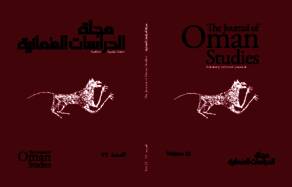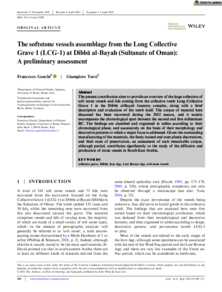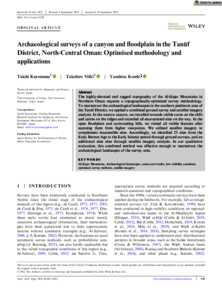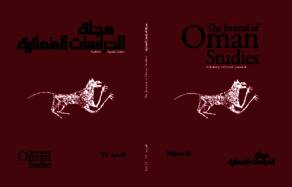Document
Funerary evidence and reuse practices : the cairn burials at Al-Jamma in the South Batinah foothills (Sultanate of Oman).
Contributors
Larosa, Nunzia., Author
Other titles
الأدلة الجنائزية وممارسات إعادة الاستخدام : المدافن الركامية في جما في سفوح جنوب الباطنة (سلطنة عمان)
Publisher
Ministry of Heritage and Tourism.
Gregorian
2021
Language
English
English abstract
The rescue excavation carried out in 2016 along Package 2 of the Batinah Expressway in the Sultanate of Oman led to the recovery of 25 funerary structures, arranged in two main clusters (the Al-Jamma foothills and the Wadī Banif). The research area is located in the southern Batinah plain, at the foot of the Al-Hajar Mountains. Preliminary surface investigations led to the identification of the two groups of tombs that were excavated with stratigraphic method and documented with modern surveying and data recording techniques, including sampling of human remains. The most interesting and best-preserved groups of cairns are located in inland-Al-Jamma (Ar-Rustāq), on the top and on the slopes of low hills, or on the terraces and beds of the valleys. The investigation of the tombs, in addition to the preliminary analysis of the architectural elements, building techniques, and burial practices, allowed the identification of the structural types and the description of tomb use, reconstruction, reuse and pillaging activities, as well as insight into rituals and funerary practices. Confirmation of the custom of reusing earlier tombs, that persisted over the centuries, often modifying the original appearance of the structure and altering its content, represents the most evident result of the research. The necropolis appears to have been used from the Bronze Age, probably Hafit period, up to the PIR period (Pré Islamique Récente), as evidenced by the grave goods that are composed mainly of personal ornaments – such as pearls, rings and earrings – and metal weapons and tools – such as swords, arrowheads and a flat axe. The purpose of this paper is primarily to provide original data on the funeral practices, including the custom of reusing pre-existing tombs, and to illustrate .the results of the highway rescue excavations.
Member of
Resource URL
Citation
Genchi, Francesco, & Larosa, Nunzia (2021) Funerary Evidence and Reuse Practices: The Cairn Burials at Al-Jamma in the South Batinah Foothills (Sultanate of Oman). The Journal of Oman Studies, (22), 41–72.
Arabic abstract
أدت التنقيبات الإنقاذية التي أجريت في عام ٢٠١٦م على طول الحزمة الثانية من طريق الباطنة السريع في سلطنة عمان إلى اكتشاف ٢٥ مبنى جنائزي منظمة في مجموعتين رئيسيتين (سفوح جما ووادي بنيف). تقع منط- البحث في سهل الباطنة الجنوبي عند سفوح جبال الحجر. أدت الدراسات السطحية الأولية إلى تحديد مجموعتي القبور التي تم التنقيب عنها بالطريقة الطبقية ، وتم توثيقها باستخدام تقنيات المسح وتسجيل البيانات الحديثة، بما في ذلك أخذ عينات من الرفات البشرية. تقع أكثر مجموعات القبور الركامية إثارة للاهتمام وأفضلها حفظا في مناطق جمّا الداخلية (الرستاق)، أو على قمة التلال المنخفضة وعلى منحدراتها، أو على مصاطب الأودية وقيعانها. وقد سمحت دراسة القبور، بالإضافة إلى التحليل الأولي للعناصر المعمارية، وتقنيات البناء، وممارسات الدفن، بتحديد الأنواع البنائية، ووصف استخدام القبور، وإعادة البناء، وأنشطة إعادة الاستخدام والنهب، وكذلك إلقاء نظرة على الطقوس والممارسات الجنائزية. ويمثل تأكيد عادة إعادة استخدام القبور السابقة، والذي استمر على مر القرون، وغالباً ما يؤدي إلى تعديل المظهر الأصلي للبناء وتغيير محتواه النتيجة الأكثر وضوحاً لهذه الدراسة. ويبدو أن المقبرة قد استخدمت من العصر البرونزي، ربما فترة حفيت حتى فترة ما قبل الإسلام الحديثة، وذلك كما يتضح من الأدوات الجنائزية التي تتكون أساسًا من الحلي الشخصية مثل اللؤلؤ، والخواتم والأقراط والأسلحة والأدوات المعدنية مثل السيوف، ورؤوس السهام، والفأس المسطحة. إن الغرض من هذا البحث هو تقديم بيانات أصيلة عن الممارسات الجنائزية، بما في ذلك عادة إعادة استخدام القبور الموجودة مسبقا، وتوضيح نتائج التنقيبات الإنقاذية على الطريق السريع.
Category
Journal articles






